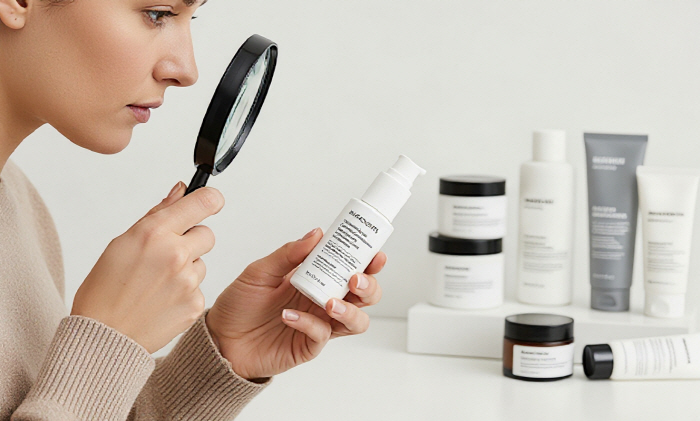How to analyze the ingredients of cosmetics that fit you
|
When choosing cosmetics, many people often rely solely on phrases emphasized in advertisements or simply because they are famous brands. However, colorful promotional phrases and actual ingredients are often separate. Because the skin varies greatly from person to person, cosmetics that fit well with someone can be irritating to others. Therefore, it is necessary to have the ability to understand and distinguish ingredients on your own.
1. Identify your skin type
The first step in ingredient analysis is to know exactly my skin type. If you have dry skin, you must check ingredients that enhance moisturization, such as hyaluronic acid, glycerin, and ceramide. If you have oily skin, avoid products with a lot of alcohol or oil, and products containing salicylic acid (BHA) or niacinamide, which are effective in controlling sebum, are suitable. For sensitive skin, it is important to choose a hypoallergenic product with minimal artificial flavors, pigments, and strong acid components.
2. Distinguish efficacy from key ingredients
Cosmetic components can be largely divided into main and auxiliary components. The main ingredient is responsible for the efficacy promised by the product, and the auxiliary ingredient improves the feeling of use or stabilizes the formulation. For example, whitening functional cosmetics should contain main ingredients such as niacinamide and albumin. It is not just a product with a good scent or touch, but it is necessary to make sure that the core ingredients are included for the purpose.
3. Check ingredients to avoid
Not all ingredients are harmful to everyone, but it is recommended to avoid ingredients that are likely to cause skin irritation or allergies. Preservatives such as parabens, mineral oils, synthetic fragrances, and excessive silicones are typical. In particular, sensitive or troubled skin is more likely to have problems if products containing these ingredients are used. However, it is important to check my skin condition and reaction rather than to conclude that it is a bad ingredient unconditionally.
4. Learn how to read the ingredient list
The cosmetic ingredient table is listed in the order of high content. Therefore, the first five ingredients often determine the efficacy of the product. Moisturizing ingredients such as purified water, glycerin, and butylene glycol should be at the top of the moisturizing cream. If the colorful functional ingredients are written at the end, the actual content is small, so it is difficult to expect an effect.
5. Utilize ingredient analysis tools
Even those who lack expertise can easily get help by using ingredient analysis apps or sites. Platforms such as 'Hwahwa', 'Crimarab' inform the efficacy and precautions of each ingredient, making it easy for beginners to understand. In particular, ingredients that can cause allergies or should be avoided are organized at a glance, so products can be compared quickly.
6. Don't be swayed by trend ingredients
These days, certain ingredients emerge like 'hot items' and appear frequently in advertisements. However, not all skin types are suitable for fashionable ingredients. For example, high concentrations of retinol have a strong effect but can be irritating in sensitive skin. Therefore, rather than choosing recklessly according to the trend, you should carefully check whether the concentration and combination are suitable for your skin.
7. Check the reaction after testing the product
Even if you read the ingredient list carefully, it is difficult to know until you try it. Therefore, it is recommended to test new cosmetics on the inside of your wrist or behind your ears before using them. It is safe to use it all over the face when there is no irritation or trouble for a few days. This process can prevent unnecessary skin damage.
As cosmetics come into contact with the skin every day, checking the ingredients is not an option, but a must. If I make a habit of distinguishing between the ingredients I need and the ingredients I need to avoid, and reading the whole ingredient list, I can prevent unnecessary expenditure and protect my skin health. Finding ingredients that fit your skin type and lifestyle without being misled by advertisements is the beginning of real skincare. If you make a habit of carefully examining the ingredient list from today, you will be able to find cosmetics that fit you perfectly and complete a healthy skin routine.
This article was translated by Naver AI translator.




